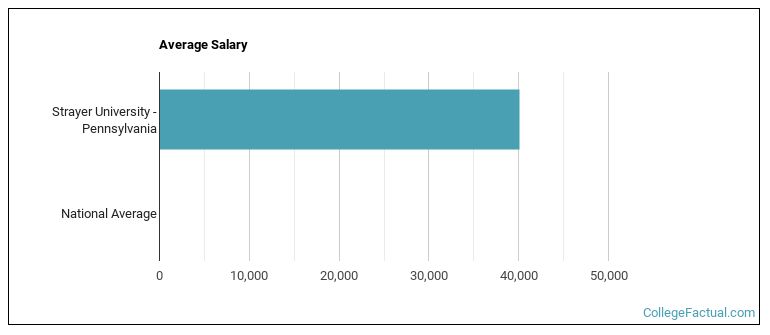 by our College Data Analytics Team
by our College Data Analytics TeamExplore the best ranked schools for the programs you are most interested in.
Strayer University - Pennsylvania was not ranked in College Factual's 2025 Best Overall Colleges report. This could be for a number of reasons, including lack of data.
See all of the rankings for Strayer University - Pennsylvania.
Since Strayer University - Pennsylvania has an open admissions policy, being accepted to the school isn't that hard. However, a full basic things - such as a high school diploma or equivalent - may be required. Also, go over your application to make sure it is complete before you submit it.
The student to faculty ratio at Strayer University - Pennsylvania is 41 to 1, which is high when compared to the national average of 15 to 1. This may indicate that some of your classes will be larger in size than they would be at other schools. However, upper level classes will probably be smaller.
Another measure that is often used to estimate how much access students will have to their professors is how many faculty members are full-time. The idea here is that part-time faculty tend to spend less time on campus, so they may not be as available to students as full-timers.
The full-time faculty percentage at Strayer University - Pennsylvania is 20%. This is lower than the national average of 47%.
During the 2017-2018 academic year, there were 1,973 undergraduates at Strayer University - Pennsylvania with 105 being full-time and 1,868 being part-time.

See which majors at Strayer University - Pennsylvania make the most money.
Get more details about the location of Strayer University - Pennsylvania.

Contact details for Strayer University - Pennsylvania are given below.
| Contact Details | |
|---|---|
| Address: | 3800 Horizon Blvd Ste 100, Trevose, PA 19053 |
| Phone: | 877-445-7180 |
| Website: | https://www.strayer.edu/campus-locations/pennsylvania/lower-bucks-county |
| Most Popular Majors | Bachelor’s Degrees | Average Salary of Graduates |
|---|---|---|
| General Business/Commerce | 160 | $55,431 |
| Health & Medical Administrative Services | 20 | NA |
| Marketing | 18 | NA |
| Criminal Justice & Corrections | 18 | $43,405 |
| Business Administration & Management | 16 | NA |
| Public Administration | 15 | NA |
| Accounting | 13 | $52,373 |
| Educational Administration | 8 | NA |
| Computer Information Systems | 3 | $67,315 |
| Information Science | 3 | $71,167 |
Online learning is becoming popular at even the oldest colleges and universities in the United States. Not only are online classes great for returning adults with busy schedules, they are also frequented by a growing number of traditional students.
In 2022-2023, 1,374 students took at least one online class at Strayer University - Pennsylvania. This is a decrease from the 1,520 students who took online classes the previous year.
| Year | Took at Least One Online Class | Took All Classes Online |
|---|---|---|
| 2022-2023 | 1,374 | 1,374 |
| 2021-2022 | 1,520 | 1,520 |
| 2020-2021 | 2,190 | 2,190 |
| 2018-2019 | 2,224 | 1,971 |
Learn more about online learning at Strayer University - Pennsylvania.
Footnotes
*The racial-ethnic minorities count is calculated by taking the total number of students and subtracting white students, international students, and students whose race/ethnicity was unknown. This number is then divided by the total number of students at the school to obtain the racial-ethnic minorities percentage.
References
More about our data sources and methodologies.